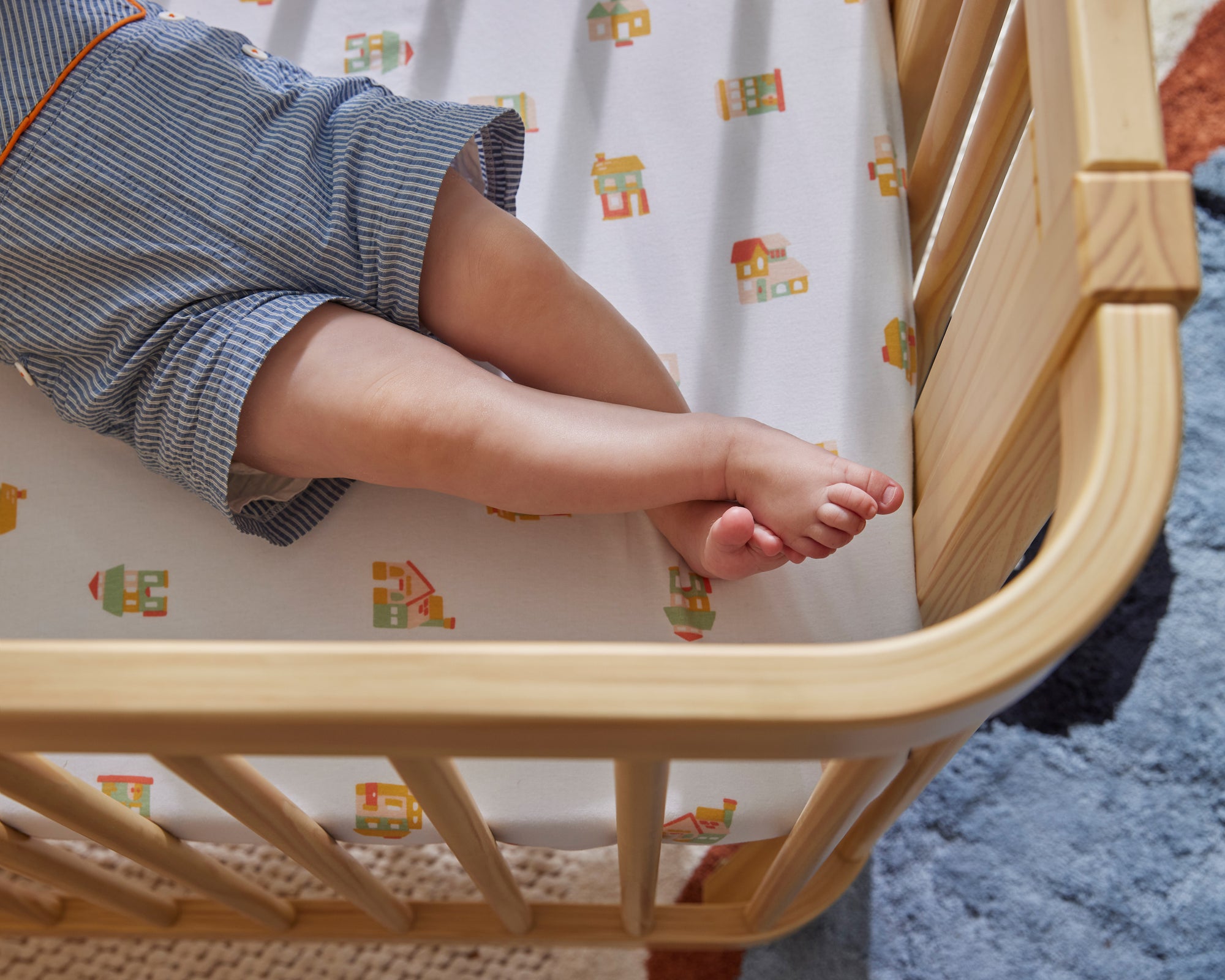Gifting has never been easier
Perfect if you're short on time or are unable to deliver your gift yourself. Enter your message and select when to send it.

Written by Dr. Ali Alhassani
As a pediatrician and the Head of Clinical at Summer Health, I regularly encounter parents with a myriad of concerns about their baby's crib. It's a space where your little one spends a significant amount of time, so it's only natural to want it to be as safe as possible. While certain things might seem scary, I do want to preface that these are normal parts of a child’s development and rest assured that safety standards for cribs are designed to ensure that babies are kept safe from serious injury.
Here are some insights on four common concerns:
It's a heart-stopping moment for any parent: finding your baby's arm or leg stuck between the crib spindles. However, this is a very normal occurrence and developmental milestone for babies and not dangerous by any means. Usually babies are able to wiggle themselves out on their own and if not, you can easily help them get readjusted and quickly back to sleep. Most cribs follow proper guidelines to ensure that the distance between spindles is no more than 2 ⅜ inches (about the width of a soda can). This reduces the chances of your baby's limbs getting trapped. Most kiddos learn not to get stuck over time, but if it really unnerves you, mesh crib liners can also be considered as they prevent limbs from going through. Just ensure they are breathable and securely attached.
We all know that babies love to chew on things, especially when they're teething. However, gnawing on cribs or stickers can pose risks. Ensure the paint used on the crib is non-toxic. Regularly inspect the crib for any chipping paint or loose stickers and remove them immediately. Consider using silicone crib rail covers; they protect the crib and provide a safe surface for your baby to teethe on.
Babies are naturally curious and active, which can sometimes lead to them bumping their heads on the crib spindles. While minor bumps are a part of growing up, there are no concerns for serious injuries.
As your baby grows and becomes more mobile, it's essential to adjust the mattress height. Start with the highest setting for newborns, and as your baby begins to sit up, lower the mattress. Once they can stand, it should be on the lowest setting to prevent them from climbing out. It's safe to use the crib as long as your child hasn't reached the height limit specified by the manufacturer, typically around 35 inches, or if they can climb out on their own. A good rule of thumb to follow is that a child can remain on the lowest level of the crib generally until the top rail is at mid-chest or nipple height when standing.
While cribs are designed with safety in mind, it’s wise for parents to be proactive. Regularly inspect the crib, stay updated with safety guidelines and if anything feels off to you, don’t hesitate to reach out to an expert to help prioritize your baby's well-being.
Whether it’s a question about crib safety, feeding, a random rash, or you just want to know if something seems normal (and avoid a Google doom-scroll), Summer Health offers compassionate support from pediatricians & pediatric specialists around the clock for anything that comes up. Use code Nestig2MO for 50% off your first two months to start accessing a personalized care team for your family.